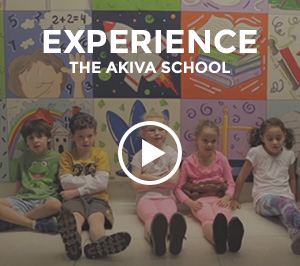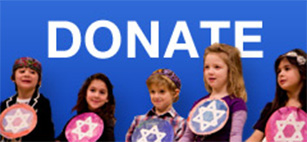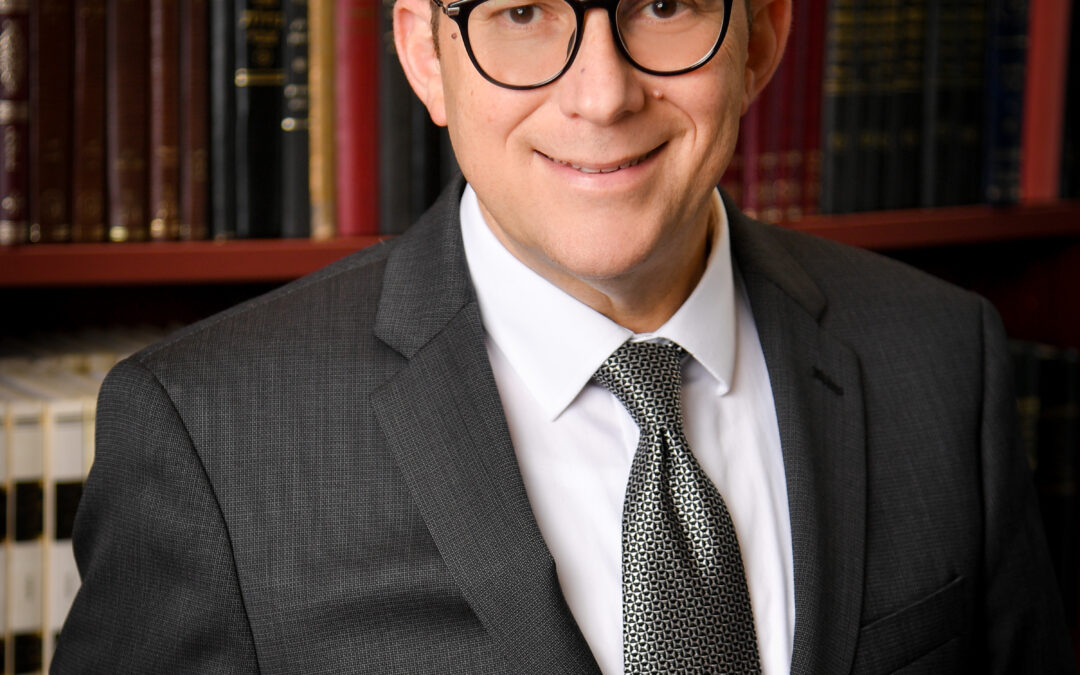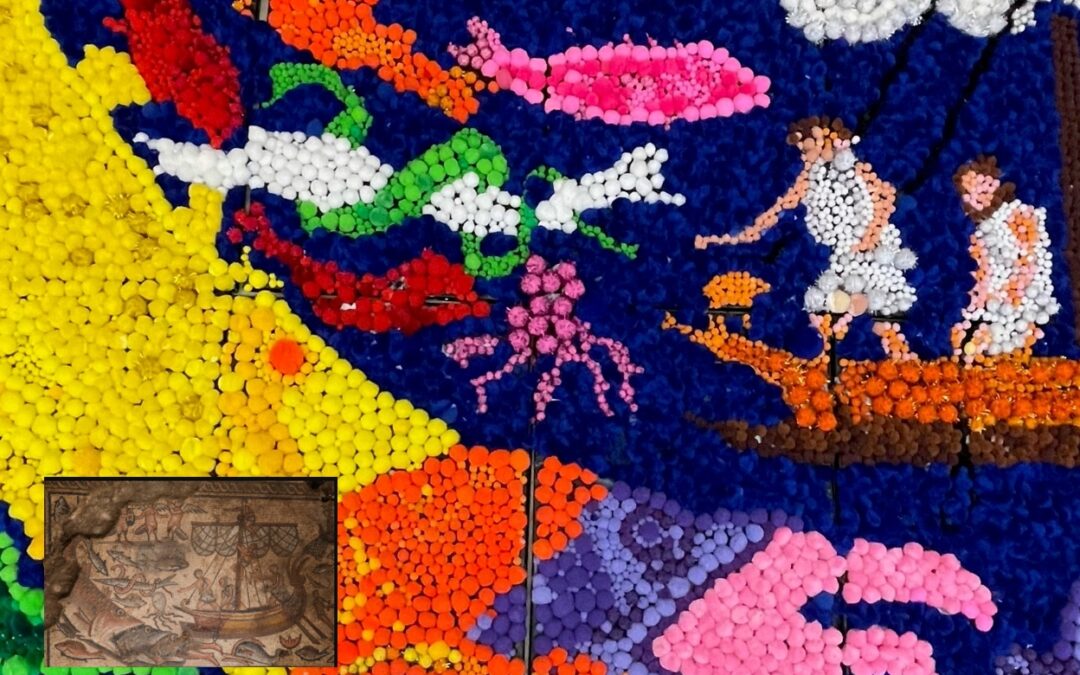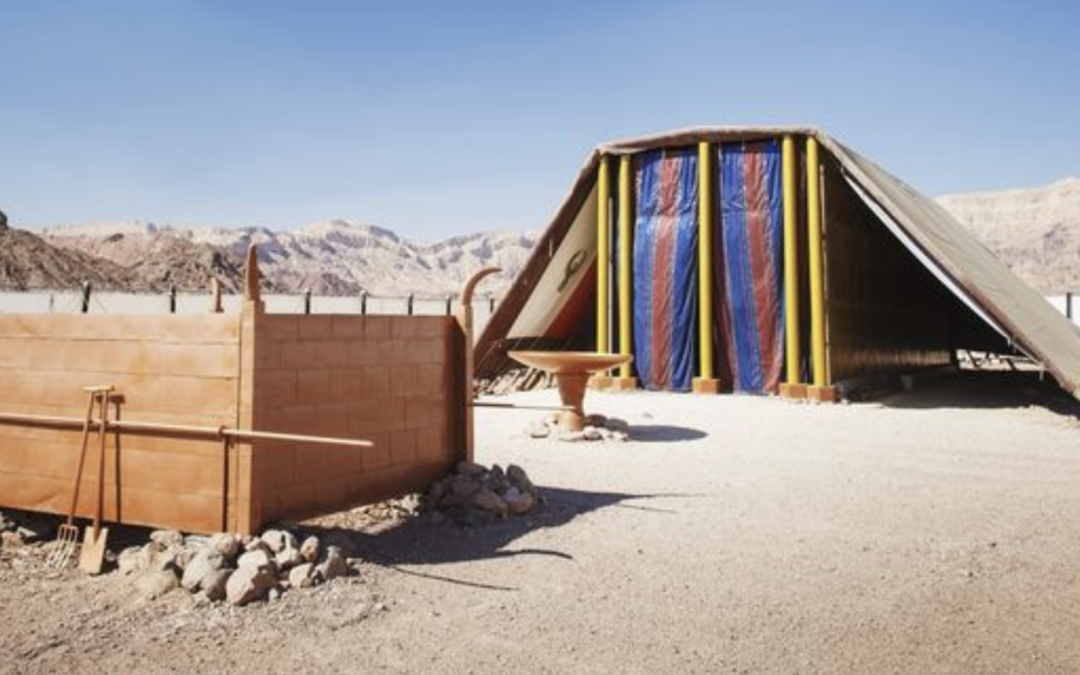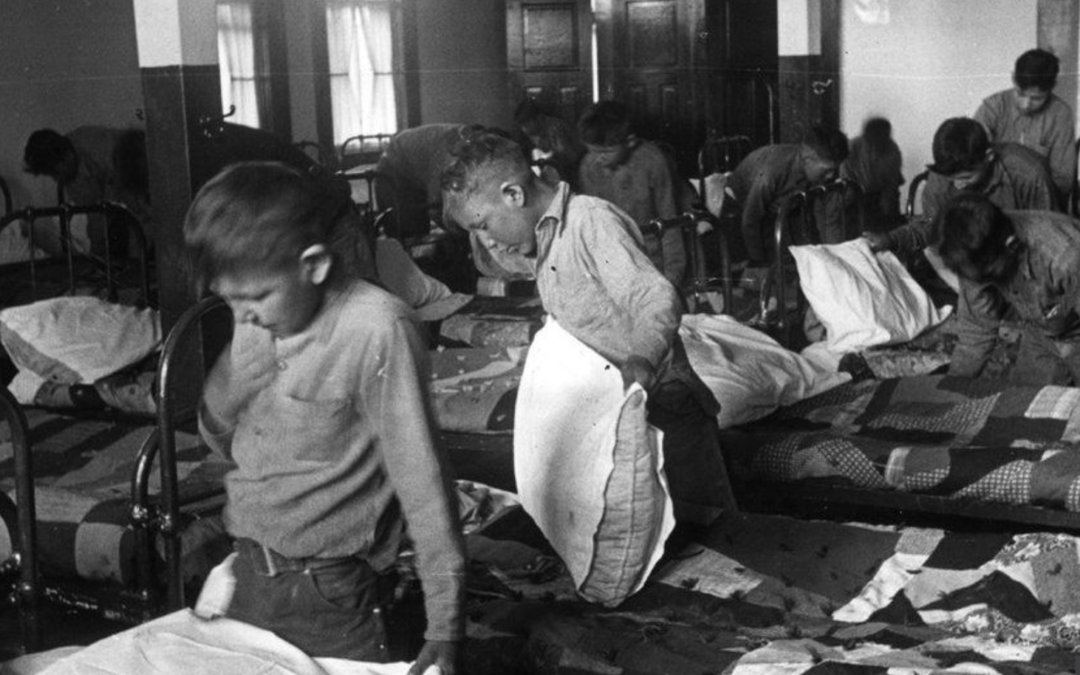
Gideon Pollack, Co-President, Akiva School
D’var Torah Message from the Co-President
Although it is customary to give a traditional d’var torah about this week’s parshah, Vayishlach, which details Yaakov’s struggles with his brother Esav, I wanted to reflect on a different sort of brotherly struggle; this one being a modern day one. Allow me to share a bit about a recent experience of mine, in particular because the genesis of this experience was rooted in the Akiva community. When I was an Akiva kid in the early 80’s, I remember having an assembly one day, during which we welcomed to our school two sisters who had just come to Montreal from Ethiopia. This was the first time that I, and many people in our community, had ever even heard of Jews living in Ethiopia — and to all of a sudden have two of them sitting with us in our classes was a really fascinating experience.
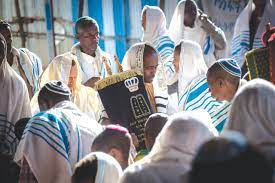 It never occurred to me that I would one day travel to Ethiopia, but fast-forward 30 or so years to the home of one of our Akiva families, and a lecture from a friend of theirs who is an Israeli rabbi of Ethiopian descent who spoke of the countless challenges this community faced living in Israel. It wasn’t enough that they had to escape their homeland, the promised land wasn’t quite as welcoming as they had been led to believe. It so happens I attended with a close friend, another Akiva parent, who came away shocked and moved by just one statistic shared with us that night; Israelis of Ethiopian descent today represent under 1.7% of the population of Israel, but comprise 18% of the underage youth in Israeli prisons, and the adults represent an arrest rate that is twice that of their representation in Israeli society. While the poverty rate of children of immigrants to Israel approaches 15%, it is as high as 65% for Ethiopian children.
It never occurred to me that I would one day travel to Ethiopia, but fast-forward 30 or so years to the home of one of our Akiva families, and a lecture from a friend of theirs who is an Israeli rabbi of Ethiopian descent who spoke of the countless challenges this community faced living in Israel. It wasn’t enough that they had to escape their homeland, the promised land wasn’t quite as welcoming as they had been led to believe. It so happens I attended with a close friend, another Akiva parent, who came away shocked and moved by just one statistic shared with us that night; Israelis of Ethiopian descent today represent under 1.7% of the population of Israel, but comprise 18% of the underage youth in Israeli prisons, and the adults represent an arrest rate that is twice that of their representation in Israeli society. While the poverty rate of children of immigrants to Israel approaches 15%, it is as high as 65% for Ethiopian children.
In 2016, the Palmor Committee in Israel published its report into prejudice and discrimination against the Israeli-Ethiopian community, and found that the police disproportionately targeted Israeli Ethiopians, with far higher levels of arrests, indictments, and incarceration than other population sectors relative to the size of the population. Now, it was Israel’s first prime minister David Ben Gurion who famously said “When Israel has prostitutes and thieves, we’ll be a state just like any other,” but I don’t believe he would have encouraged his fellow countrymen to live as racists. So, believing that education was the great equalizer, and likely a critical missing piece in this tragic situation, my friend decided to make it his mission to raise money for scholarships for Israelis of Ethiopian descent. As part of this initiative, a group of 45 curious Jews from all over North America traveled to Ethiopia to learn the history of this fascinating community, and chaperone a plane full of new olim to “Yerusalem”, the Ethiopian reference to the Promised Land.
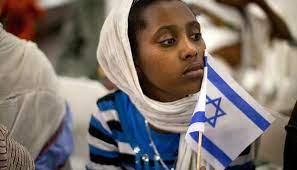 Some background – Beta Israel, the term referring to the Jews of Ethiopia, emerged comparatively recently and formed a distinct ethno-national group as far back as the 14th century. Many of the Beta Israel accounts of their own origins state that they stem from the very ancient migration of some portion of the Tribe of Dan to Ethiopia, and were led by the sons of Moses at the time of the Exodus. Alternative timelines include the later crises in Judea, such as the split of the northern Kingdom of Israel from the southern Kingdom of Judah after the death of King Solomon or the Babylonian Exile. Other Beta Israel take as their basis the Christian account of Menelik’s return to Ethiopia. Menelik is considered the first Solomonic Emperor of Ethiopia, and is traditionally believed to be the son of King Solomon of ancient Israel, and Makeda, ancient Queen of Sheba. To put it simply, the theory is that when all the other tribes went north out of Egypt, this portion of the Tribe of Dan went south to what became Ethiopia. The ties of the Ethiopian people to Judaism are so strong that one can see the Magen David exhibited throughout the emperor’s palace and the Lion of Judah as a national symbol throughout the country. In fact, we were blown away to learn that the word “Amharic,” the term for the twenty million or so Ethiopian people located in the central and northern, mountainous part of the country, and the very language the majority of the country speaks, is literally made up of the Hebrew “Am ha Har” – People of the Mountain.
Some background – Beta Israel, the term referring to the Jews of Ethiopia, emerged comparatively recently and formed a distinct ethno-national group as far back as the 14th century. Many of the Beta Israel accounts of their own origins state that they stem from the very ancient migration of some portion of the Tribe of Dan to Ethiopia, and were led by the sons of Moses at the time of the Exodus. Alternative timelines include the later crises in Judea, such as the split of the northern Kingdom of Israel from the southern Kingdom of Judah after the death of King Solomon or the Babylonian Exile. Other Beta Israel take as their basis the Christian account of Menelik’s return to Ethiopia. Menelik is considered the first Solomonic Emperor of Ethiopia, and is traditionally believed to be the son of King Solomon of ancient Israel, and Makeda, ancient Queen of Sheba. To put it simply, the theory is that when all the other tribes went north out of Egypt, this portion of the Tribe of Dan went south to what became Ethiopia. The ties of the Ethiopian people to Judaism are so strong that one can see the Magen David exhibited throughout the emperor’s palace and the Lion of Judah as a national symbol throughout the country. In fact, we were blown away to learn that the word “Amharic,” the term for the twenty million or so Ethiopian people located in the central and northern, mountainous part of the country, and the very language the majority of the country speaks, is literally made up of the Hebrew “Am ha Har” – People of the Mountain.
During this week-long mission we traveled to Gondar, one of the northernmost regions of Ethiopia, to see what remained of the Jewish community. We visited Jewish homes, synagogues, cemeteries, and a Jewish community center where some 200 or so Jews gather every morning to pray together. To walk in and witness a sea of Ethiopian Jewish women on one side of a mechitzah, and men on the other in tallit and tefillin, reciting the same prayers that we recite, only to be followed by the recitation of Hatikvah, just like we do, was mind-blowing. Theirs is a tradition based solely in the biblical Judaism that existed before the second temple period. Ask any Ethiopian Jew about Hanukkah or Purim and they’ll look at you with a blank stare. But their tradition is as strong today as it was 2,500 years ago. Today, some 170,000 Ethiopian Jews live in Israel, and many of them literally marched some 500 miles through the Sudan, at night, to get there. Many were ambushed on the way, jailed and tortured and then tried again after being pardoned. We traveled with two women, today representatives of the Jewish Agency that brought them to Israel, who did this march when they were as young as four and survived to tell the story. They each shared the memories of the nights their parents told them to pack their bags and get ready to leave, having no time even to say goodbye to their grandparents, and for one of them not even able to say goodbye to her father who was in the army at the time. To hear these stories first-hand, and then to witness the makeshift memorial to the some 4,000 young Ethiopians who died enroute to Israel, was heart wrenching. Countless families have been broken apart during this forty-year Aliyah, and of those who did arrive in Israel, some 14,000 were children who came as orphans and who were sent to youth Aliyah villages.
As many of you have likely heard over the years, there has been some doubt about the authenticity of this Jewish community. Reflecting the consistent assertions made by Ethiopian Jews, and after due investigation of their claims, a number of Jewish legal authorities, in previous centuries and in modern times, have ruled halakhically that the Beta Israel are indeed Jews, the descendants of the tribe of Dan, one of the Ten Lost Tribes. They believe that these people established a Jewish kingdom that lasted for hundreds of years. With the rise of Christianity and later Islam, naturally the three kingdoms competed. Eventually, the Christian and Muslim Ethiopian kingdoms reduced the Jewish kingdom to a small impoverished section as was often the case for myriad Jewish communities in Christian and Muslim lands. In 1973, Ovadia Yosef, the Sephardic Chief Rabbi of Israel ruled that the Beta Israel were Jews and should be brought to Israel. In 1977, the law was passed granting Ethiopia’s Jewish community the right of return.
Of the Ethiopian Beta Israel community in Israel today, a third, or some 60,000, are Israeli-born. They represent just under two percent of the Israeli population. Although the Aliyah began in earnest and quite clandestinely in the late seventies, most of this population are the descendants and the immigrants who came to Israel during Operation Moses in 1984 and Operation Solomon in 1991. Civil war and famine in Ethiopia prompted the Israeli government to mount these dramatic rescue operations, with the fascinating and dramatic Operation Solomon airlift of over 15,000 Ethiopian Jews in one 36-hour period in May 1991. For a country that absorbs, on average, 25,000 people a year, this one weekend airlift was a massive shock to the system. Let me share a cute story; one of our Ethiopian leaders who arrived in 1984 told of their memory that historic Friday night in 1991 when the planes started to land at Ben Gurion. She and her cousins were secretly watching television on Shabbat when the news broke. They knew they had to tell their parents about this historic event which no doubt was bringing their long-lost family to Israel — but at the same time they were afraid to reveal the fact that they had turned on the TV during Shabbat — so they ran down the street to find a non-Jewish neighbour to come break the news to their parents! The rescues were within the context of Israel’s national mission to gather Diaspora Jews and bring them to the Jewish homeland, but make no mistake that the opportunity to airlift so many in such a short window during Operation Solomon was the direct result of civil war in Ethiopia and the void that was created by the fall of the iron curtain and the loss of Soviet military support for the communist regime in Ethiopia. It goes without saying that Jews were traded for money and arms, as recently as 30 years ago. Although immigration has been halted numerous times over the years, mostly due to the Ethiopian government in power at any given time, the Israeli government recently resolved to bring the last remaining Jews to Israel.
Similar to other groups of immigrant Jews who made aliyah, the Ethiopian Jews have had to overcome obstacles to integrate into Israeli society. Initially, the main challenges faced by the Ethiopian Jewish community in Israel arose from communication difficulties – most of the Ethiopian population could not read nor write in Hebrew – and discrimination, including manifestations of racism, from many parts of Israeli society. Unlike Russian immigrants, many of whom arrived educated and skilled, Ethiopian immigrants came from an impoverished agrarian country, and were ill-prepared to work in an industrialized country. In the early years of the Ethiopian Aliyah many were simply sent first to absorption centers to learn the language, and then to towns on the Israeli periphery, away from the heart and soul of Israel and certainly nowhere near their beloved Yerusalem.
The tension of families being separated (one oleh on our flight had been waiting for 25 years to be reunited with his family), as well as economic and social instability, creates tremendous pressure on families and leads to an increase in domestic violence in addition to other issues, which are not uncommon in the Ethiopian community. The unemployment rate among Ethiopians after the absorption period is often as high as 40% and only a tiny number rise to senior positions (fewer than half of a percent). Although efforts are underway to establish some form of affirmative action, there is a long road ahead to establish an equitable system for Ethiopians in general Israeli society. Ethiopians have not had good experiences getting good jobs related to their fields of study, and therefore are often discouraged by their parents from going to university so they don’t “lose” three years when they could simply use their military training to become security guards at the mall.
And so now the moral of the story; what does this all have to do with us? During this trip, I asked myself what I could possibly do to make a difference in the lives of these people. I was at a complete loss for how I could have an impact but as I stood before the memorial to those who perished enroute through the Sudan and never even made it to Israel I realized that I had to at least tell the story, and whatever comes of it, comes of it. If one person comes away inspired and elects to do something, then I have contributed. As we learn in Pirkei Avot, the Ethics of our Fathers, “Lo alecha hamelacha ligmor, v’lo atah ben chorin l’hivatel mimena” – “You are not expected to complete the task, but neither are you free to avoid it.” I think we often look at our work, and our community work in particular, as binary; we aim to accomplish huge goals, or we simply do nothing at all. We look at the Elon Musks of the world and say “well if he can send people to space so can I” but when we don’t accomplish goals of the same magnitude we lose faith. This is simply not realistic. Had one friend not made the simple gesture of inviting a group of people to hear his Ethiopian rabbi friend tell his story, my other friend would not have been inspired to raise money for scholarships. Had the second friend not said “Let’s travel to Ethiopia and see what this is all about”, our group of 45 people would never have gone and would certainly never have come away with their own vision for what they could do to make this little subset of the Jewish world better. Certainly, none of them was crazy enough to think that they alone could solve this problem or right this wrong, but without a doubt each one was able to inspire others to get involved and do their part. It’s not our responsibility to solve racism or disenfranchisement in Israel, but neither is it our right to ignore it.
It occurred to me as I became active at Akiva that we are not here just to educate kids, but also to grow ourselves as active members of our community. I have watched those before me join the Akiva Board or become active in the Akiva Life parents’ association and use both as stepping stones to other deeply meaningful roles in the community at large, and so my hope continues to be that parents in our school see Akiva as a launching pad for lives of Jewish communal impact, whether here at home in the Montreal community, or in the broader Jewish world. As we see in the composition of our board, which today is made up of parents and non-parents alike and experts in their respective fields, it doesn’t end here on graduation day. Anyone who is even just curious about how they can get involved, I invite you to come speak with me, and I want to thank you all for devoting your time and energy to Akiva.


